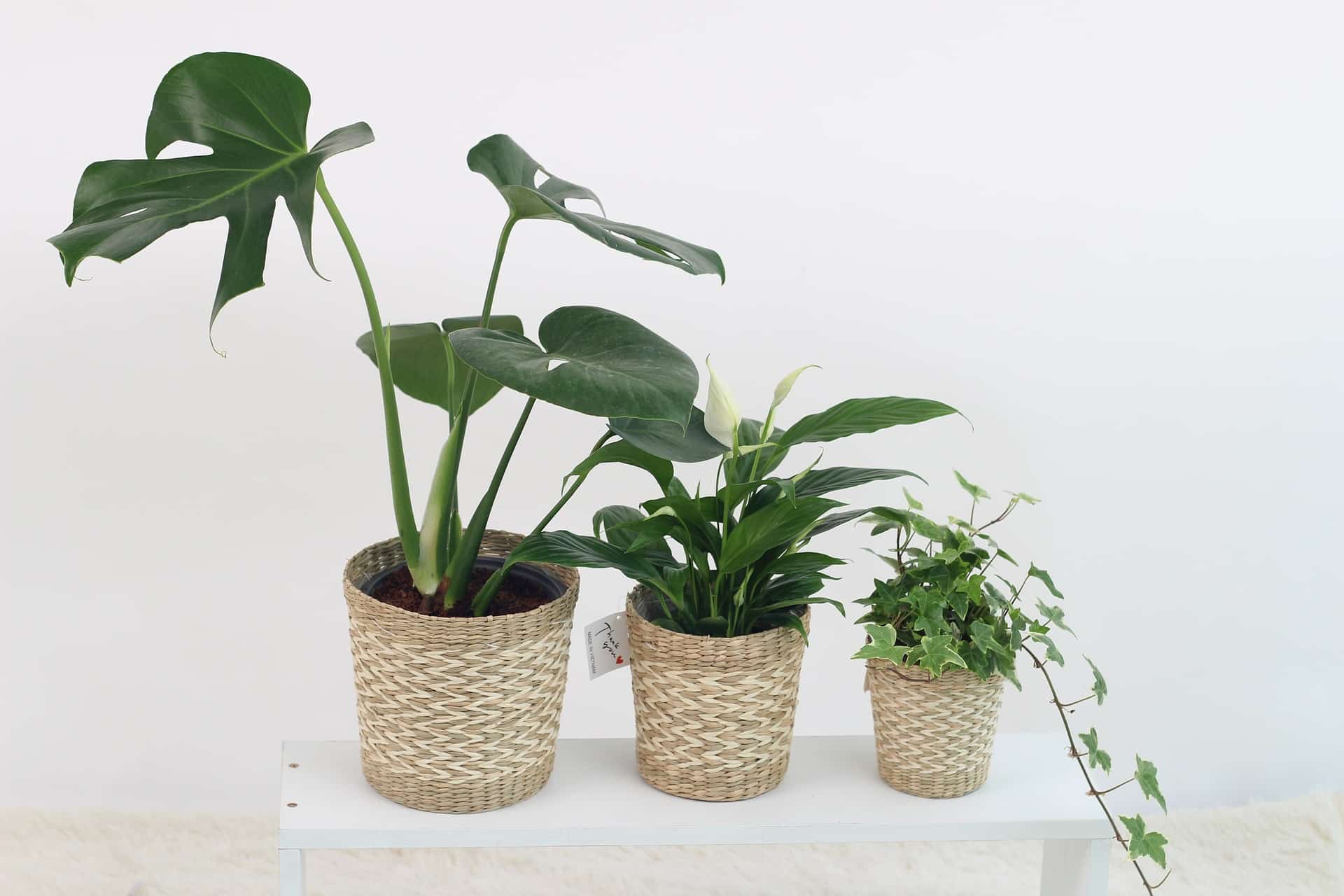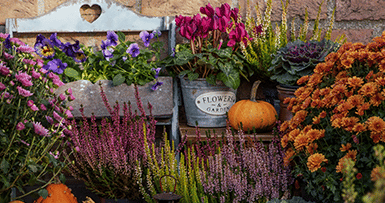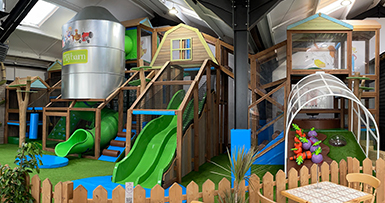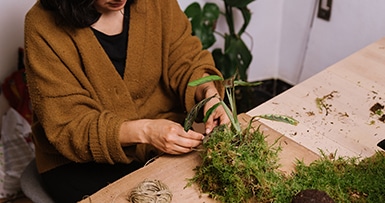5 Houseplants perfect for beginners
(and how to care for them)
Growing and caring for houseplants can be a therapeutic and rewarding experience for anybody looking to invite plant life into their homes. Whether you are new to indoor gardening or are just searching for something low maintenance to spruce up your living space now that the Christmas tree has gone – this guide will highlight six easy going plants and how to keep them happy all year round.
Our recommended picks are…
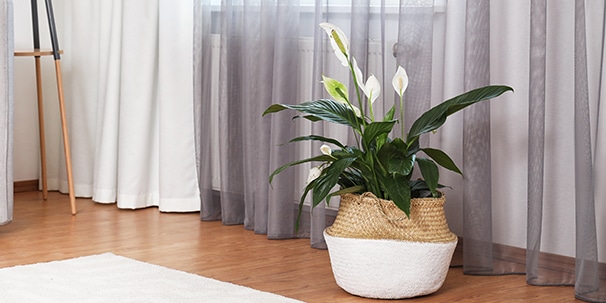
Peace Lily
Peace lilies or Spathiphyllum are amongst the most beautiful and forgiving of plants for a beginner. If you enjoy the reward of beautiful blooms throughout the year and a cheaper-than-Dyson air purifier, then this is the plant for you.
How to care for them
In its natural environment the peace lily takes root on the forest floor receiving dappled sunlight from the trees above, this makes them a lover of humidity and medium to low light, perfect for a windowed bathroom.
Peace lilies will bloom if they receive more light. Find a happy medium light spot in your home to keep your lily blooming throughout the year.
Water your peace lily only when it needs it. Simply touch the top of the soil – If the soil is moist, your lily doesn’t need water, if it’s dry, give it a drink.
Your peace lily leaves will start to droop when it needs water. Give it a drink and they will perk up very quickly! This method doesn’t harm the plant and is a very effective way of ensuring you don’t overwater it.
Your peace lily has outgrown its container when the leaves appear to droop less than a week after it was last watered. Have no fear! Simply repot your peace lily in a bigger pot (2 inches bigger than its current) or divide the root ball with a sharp knife and repot the two halves in their own containers. Congratulations you now have two peace lilies!
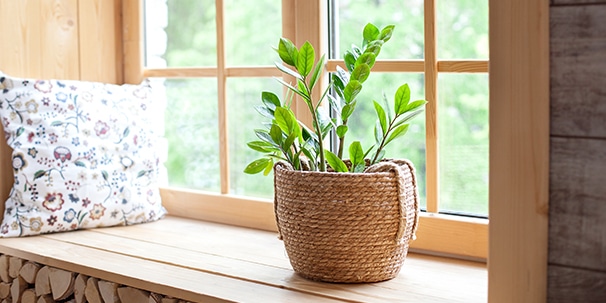
ZZ Plants – Zanzibar Gem
The Zamioculcas zamiifolia or ZZ for short is an exotic plant with long stems and glossy green leaves. They are extremely drought tolerant and will survive neglect and accept your low light living room corner with ease whilst still rewarding you with a bouquet of beautiful foliage, perfect for the forgetful gardener.
Please be aware – this plant is extremely toxic to pets!
Ideal for office spaces and areas with low lighting.
How to care for them
For the ZZ plant the best care, is less care.
Place your ZZ plant in in almost any light condition you please, including windowless rooms with fluorescent light. Only take care to not place them in direct sunlight as the leaves may start to deform, curl and yellow. If you notice this, move your ZZ to somewhere a little shadier!
With watering you really want to leave your ZZ plant alone for as long as you can.
Like cacti, the plant needs much less water than others and the ZZ will survive for months without getting a drop. Growth will increase with the occasional drink but just be mindful of time in between waterings, aim not to water more than every 2-3 weeks.
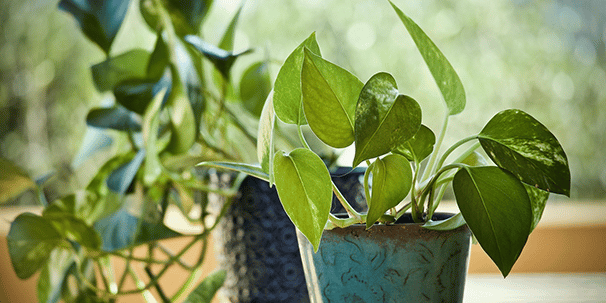
Pothos Devil’s vine
Pothos (Epipremnum aureum) is an extremely versatile and easy to grow houseplant that comes in many different varieties boasting beautiful trailing vines that can either hang low or be trained to climb. Just like peace lilies, pothos are also great air purifiers and improve the air quality in your home.
How to care for them
Varying light conditions will yield varying results for your pothos. They are tolerant of low and fluorescent lighting making them ideal for office spaces, bathrooms and trailing on top of shelves. Bright indirect light will however yield faster growth and larger leaves.
If your pothos is variegated, leaves with distinct white highlights, the plant will require brighter conditions to maintain its variegation as only the green parts of the leaf can produce energy for the plant. More light equals more energy.
A good rule is to let the top of the soil dry out between waterings to avoid overwatering. Plants in lower light conditions will also need watering less often.
As a tropical vine, pothos enjoy humid air making them ideal for bathrooms but they will also tolerate dry air. If placed in dry air, consider misting your pothos on occasion to give it a boost of humidity.
Propagating a pothos is as easy as taking a cutting from just below a leaf node and placing it in water. Change the water every few weeks and you’ll be growing a little pothos haven in no time! Pot a few of your propagations together in some soil once they have established a good root system (a few months) and you have your very own grow pothos.
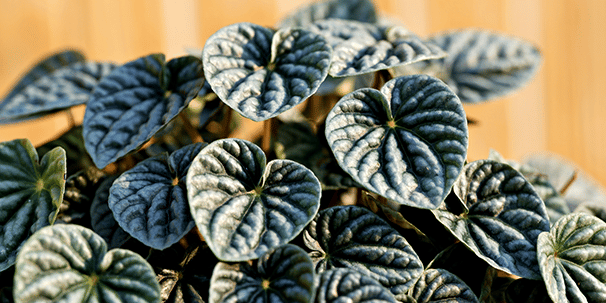
Peperomias Radiator plants
The great thing about peperomias is that their varieties are all so unique, from the small succulent like rubber leaves of a trailing Jade, to the ripple textured deep red foliage of the luna red. The best thing about peperomias is that they are low maintenance and easy to care for!
They are also non-toxic making them a safe plant for households with nibble-y pets. We would still heavily advise that you don’t eat them!
How to care for them
Peperomias will need more light than the previous plants on this list so pick a place where they will get medium to bright light. Near a window is ideal but be careful of direct sun as you don’t want to burn the leaves.
Peperomia are like succulents in nature and can handle neglect so don’t rush to water them as overwatering can lead to root rot. Let the soil dry out before waterings, roughly 1-2 weeks. The brighter the conditions the quicker the soil will dry out.
Yellowing leaves with moist soil is a sign of overwatering
You can propagate your peperomia from all parts of the plant aside from the root and is best done by using the same methods as you would for the pothos. Cut a stalk with a leaf and place it in water, clean the water every couple of weeks and plant in soil again once you have some established roots.
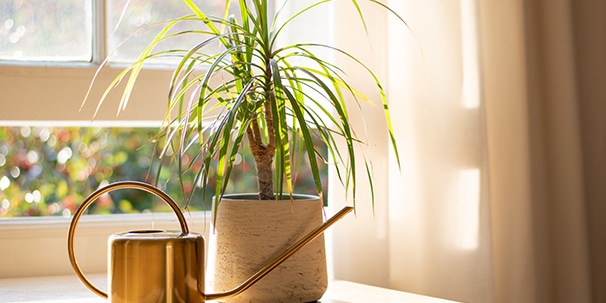
Dracaena – Snake Plant
With large stiff wavy stems, the Snake plant is a great decorative piece that come in a range of sizes. Like the ZZ plant, Snake plants are an incredibly tolerant and a great popular choice for beginner indoor gardeners as they are very low maintenance. They have also been proven to remove toxins in the air such as formaldehyde, another great air purifier!
How to care for them
Snake plants are very versatile when it comes to light preference as they can adapt to almost any light conditions, however, they do prefer a warmer climate with indirect light and occasional sun. They will still tolerate low light, so this plant is perfect for anywhere in the home.
The Snake plant is a slow grower but with bright conditions and the right humidity, you may see it grow quite rapidly.
The only real way to kill off a Dracaena is by overwatering so let the soil dry out completely between waterings if you need to. In the winter months it’s best leave your snake plant for as long as possible between waterings, they will be happy for two months without it!
Like the peace lily, you can divide the snake plants rootball to make new plants, use a sharp knife and divide the rootball into sections taking care that the roots remain intact. Replant the sections with cactus potting soil and place it in a partially sunny location. Give them a water and you have your own Snake plants!


